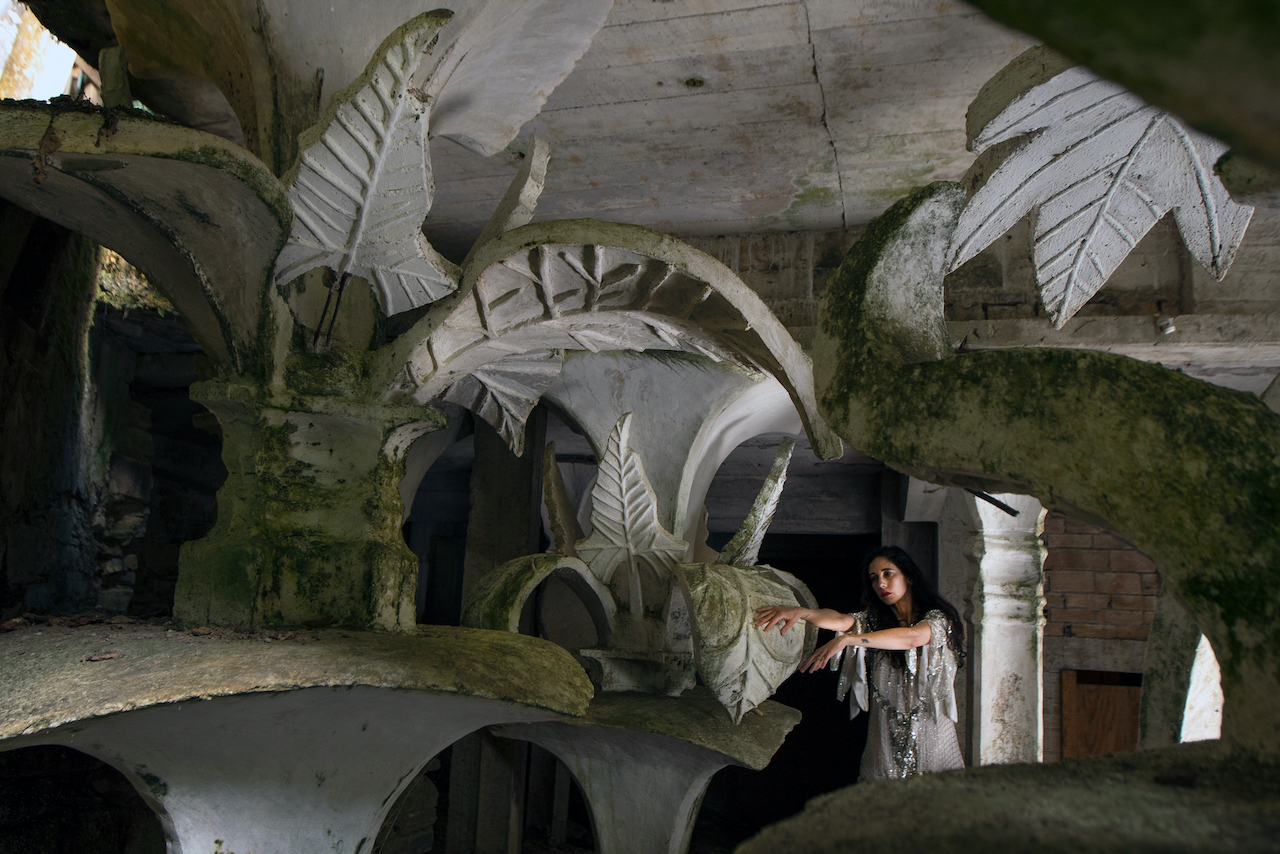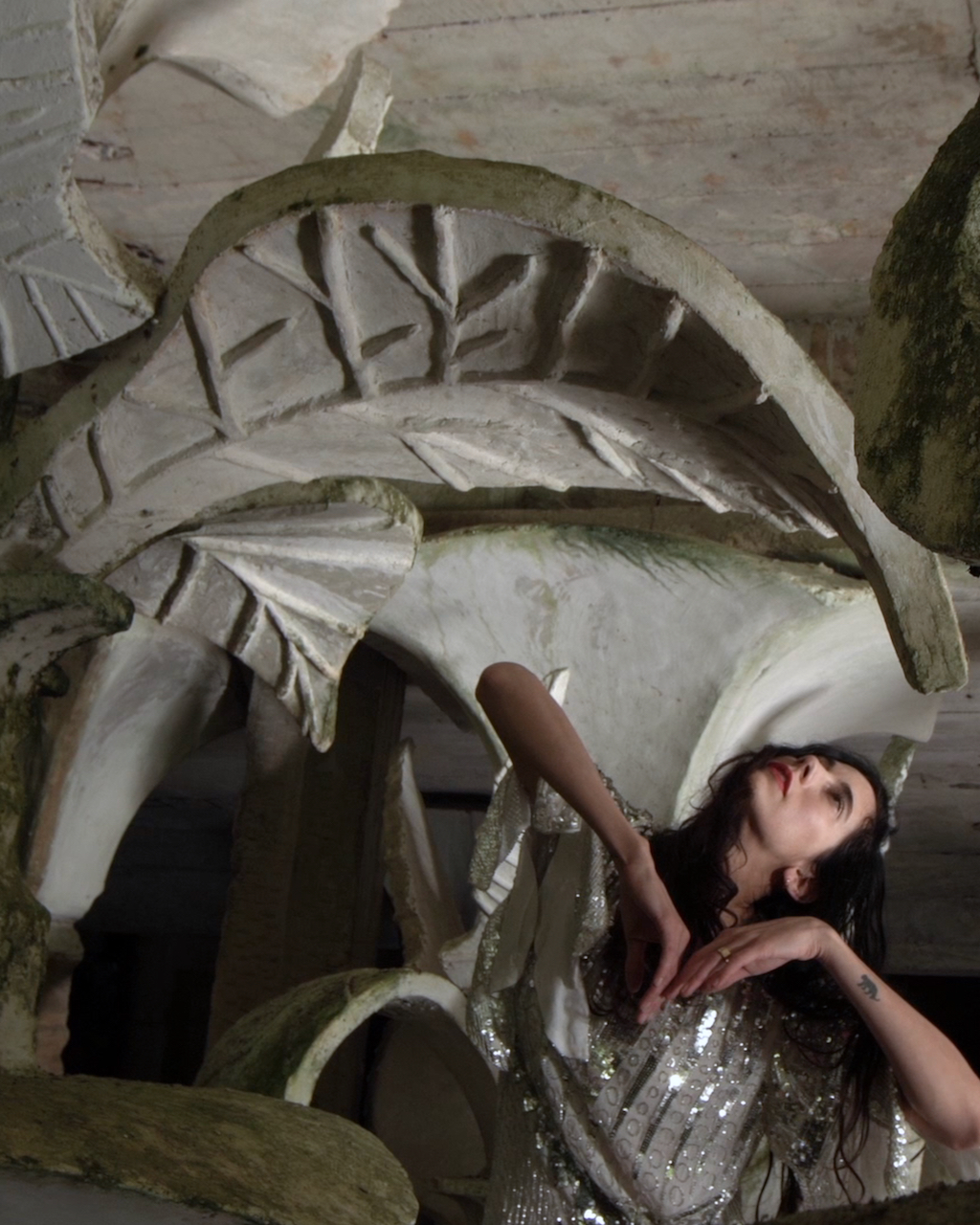The Green Goddess
Lille3000 Biennial, curated by Dorothée Dupuis, Lille, France
Establishing a parallel between the forms of art and the forms of nature, the exhibition adopts the playful form of a vast greenhouse recreated in the Gare Saint Sauveur.
Artists: Gwladys Alonzo, María José Argenzio, Mariana Castillo-Deball, Carolina Caycedo, Chelsea Culprit, Dewar & Gicquel, Naomi Fisher, Galerie Rezeda, David Gumbs, Cristóbal Gracia, Cynthia Gutiérrez, Renaud Jerez, Lake Verea, Lucile Littot, Engel Leonardo, Caroline Mesquita, Miguel Penha, Calixto Ramírez Correa, Clémence Seilles, María Sosa, Fabiola Torres-Alzaga
CONCRETE FLOWERS – 2019
VIDEO 16:9, 15M
STEREO SOUND
The daughter of a botanist, Naomi Fisher was born and raised in Miami against a backdrop of a wild and untamed tropical environment. In these works, she frequently explores the tensions between nature and current capitalist dynamics through feminist theory and strategies derived from surrealist art. Combining documentary and performance, she follows dancer Elizabeth Hart, her favourite performer, through an improvised choreographic exploration of Las Pozas, Edward James’ sculptural garden, a mythical space designed and built by this magnate and surrealist artist in Xilitla, San Luis Potosi Starting from the anecdote of a frost that supposedly destroyed all the precious orchids in the garden one day and the creation of a visual vocabulary inspired by dreams and the practices of other surrealist artists such as Leonor Fini, Naomi Fisher builds a dreamlike fictional ramble. Ivan Lee is the author of the soundtrack, in which he incorporates sounds created from the frequencies emitted by the plants in the garden. The work thereby plays on the tension between the power of nature and the male desire to design monuments that transcend time.
Artiste & Realisatrice / Artist & Director : Naomi Fisher
Choregraphie & performance / Choreography & performance : Elizabeth Hart
Musique / Music : Ivan Lee
Produit par / Produced by : Naomi Fisher Studio, estudio de producion
Camera & Montage / Camera & Editor : Cristian Manzutto
Assistant Realisation / Camera Assistant : Francois Nobecourt
Coloriste / Colorist : Cristian Manzutto & Francois Nobecourt
Son d’ambiance & Mixage / Sound Ambiences Mix : Cristian Manzutto
Image & Son / Image & Sound : Post-Production Studio, estudio
de production
Filme a / Shot on site at : Las Pozas, Xilitla, Mexico
Producteur / Producer : Dorothee Dupuis, lille3000
Remerciements / Special thanks to : Fondation Pedro & Helena Hernandez, A. C., Las Pozas, Jardín Escultórico Edward James, Dorothee Dupuis, Ana Garcia, Daphne Correll, Maria Barraco, Margaret Hooks Tangeman, Joe Richaud
THE GREEN GODDESS
APRIL 27> SEPTEMBER 08, 2019 GARE SAINT SAUVEUR, LILLE
The infinite exuberance of the landscapes and ecosystems of our planet has always fascinated its inhabitants. The object of an endless war both against its destructive powers and to gain control of its fertility and its resources, nature is an El Dorado that humanity has considered from very early on as a protean divinity and that the different mythologies of the world they have symbolized through animals, young women and other entities, often anthropomorphic. Man has always understood the fragile side of nature empirically – hence the incarnation of it by those graceful forms such as nymphs and other wild characters. However, his possible finiteness, including his own extinction, has only been scientifically accepted for a short time. The awareness of climate change is recent and does not yet generate consensus, when it is not opposed, plain and simple, a resounding refusal with the fatalistic argument according to which “it is too late”. However, and all scientists agree to say it: Nature will survive our human extinction.
Like a cyborg, each leaf, each plant, each organism has the constant capacity to mutate, to start again or to modify its circuits to adapt to new circumstances. The notion of “nature” only exists in dynamic relation to that of “culture” (understood as a definition of human presence on earth), as well as the way in which their global ways of life, driven by colonization and late capitalism , influence the environment, and vice versa.
The Green Goddess in the title is thus conceived both as a character, a “generic” incarnation of the idea of nature, but also as a landscape endowed with synesthesia, made up of the works in the exhibition. The latter illustrate, with overwhelming accuracy, the drastic alterations suffered by the human, plant and animal kingdoms since the last century, showing both the contemporary technological relationship that we maintain with our environment, as well as other systems of understanding it, in its majority from the original peoples of the Americas.
Drawing a parallelism between the forms of art and the forms of nature, the exhibition takes the playful form of an extensive fictitious conservatory reconstituted in the Gare Saint Sauveur. In an incessant dialogue with the notion, also crucial, of the world built through the figure of ruin, whether urban or from disappeared civilizations, but also from the modernist architectural ideal, the exhibition shows numerous landscapes, gardens, mystical representations, imaginary and / or historical of nature, indigenous cosmogony, technology or science fiction. The works, plant elements of a virgin forest, architecture modules or inhabitants / protagonists, are interspersed with a scenography loaded with exoticism, spectacular and intentionally apocalyptic, underlining the ambiguities of the notions of nature, authenticity and exploitation.
Curator: Dorothée Dupuis








